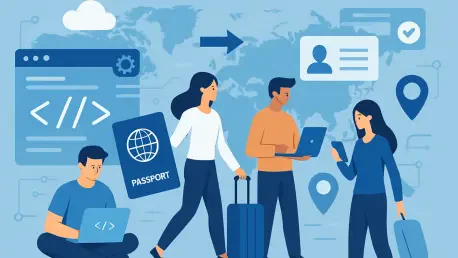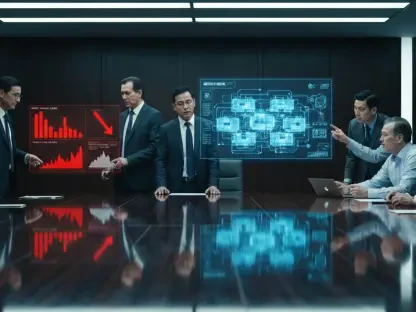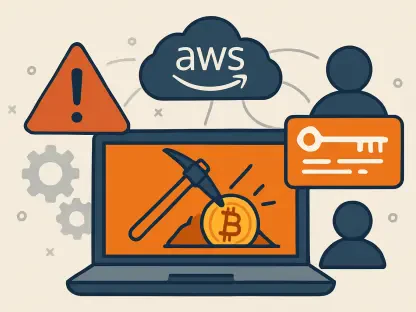I’m thrilled to sit down with Oscar Vail, a seasoned technology expert whose innovative work in software development has made significant impacts in specialized industries like immigration and government services. With a deep-rooted passion for emerging technologies such as quantum computing and robotics, Oscar brings a unique perspective to creating secure, efficient, and user-friendly solutions. In this interview, we explore his journey through software development, focusing on his experiences with sensitive data systems, the intricacies of compliance and security, and his approach to collaboration and problem-solving in mission-critical environments. Let’s dive into how Oscar is shaping the future of technology in these vital sectors.
How did your journey in software development begin, and what drew you to focus on industries like immigration and government services that handle sensitive data?
My journey started with a fascination for problem-solving through code during my university days studying Computer Science. I was always intrigued by how technology could streamline complex processes. What drew me to industries like immigration and government services was the opportunity to work on systems that have a direct impact on people’s lives—think visa processing or case management. These sectors deal with highly sensitive data, and I found the challenge of balancing functionality with security incredibly rewarding. Early in my career, I worked on a project for a government agency, and that experience cemented my interest in building solutions that are not only efficient but also trustworthy.
Can you share a memorable project where you used a programming language like Java, Python, or C# to solve a unique challenge?
Absolutely, one project that stands out was developing a case management system for an immigration platform using Python. The challenge was to create a system that could handle large volumes of data while ensuring quick retrieval for officers processing applications. I leveraged Python’s robust libraries to build a scalable backend that integrated seamlessly with a web interface. The result was a tool that reduced processing times by nearly 30%, which was a huge win for both the staff and the applicants. It taught me how powerful the right language can be when tailored to a project’s needs.
What has been your experience with web development frameworks like Angular or React, and how have you used them to enhance user experience?
I’ve worked extensively with Angular, particularly on a project where we revamped the user interface for an immigration compliance tracking tool. The goal was to make the application intuitive for officers who weren’t tech-savvy. Using Angular, I created a dynamic, responsive dashboard that allowed users to navigate complex data—like visa statuses or compliance alerts—with just a few clicks. The framework’s ability to handle real-time updates was key in ensuring the interface was both user-friendly and efficient, ultimately improving workflow for the end users.
How do you approach integrating APIs to connect platforms with external systems, and can you describe a specific instance where this made a difference?
API integration is all about creating seamless communication between systems while maintaining security. I approach it by first mapping out the data flow and identifying potential bottlenecks or vulnerabilities. A notable instance was integrating a payment gateway into an immigration application system. We needed to ensure secure transactions while linking to external financial systems. I designed a custom API that encrypted sensitive data during transmission and provided real-time confirmation of payments. This integration not only streamlined the process for applicants but also reduced errors, making the system more reliable.
What strategies do you use to ensure compliance with legal and regulatory standards like GDPR when developing software for sensitive sectors?
Compliance is non-negotiable in sectors like immigration. My strategy starts with a thorough understanding of the regulations—whether it’s GDPR or local data privacy laws. I incorporate privacy-by-design principles, meaning security features are built into the software from the ground up, not added as an afterthought. For instance, in a recent project, I implemented strict access controls and data anonymization to protect personal information. I also work closely with legal teams to stay updated on requirements and conduct regular audits to ensure the software remains compliant as laws evolve.
Can you walk us through your process for identifying and resolving software bugs, especially in high-stakes environments?
In high-stakes environments, bugs can have serious consequences, so my process is meticulous. I start by reproducing the issue in a controlled setting to understand its scope—whether it’s a UI glitch or a backend error. Then, I use debugging tools and logs to trace the root cause. For example, I once tackled a performance issue in a visa processing app where data retrieval was lagging. After analyzing the logs, I found an inefficient database query was the culprit. I optimized the query and added caching, which slashed load times significantly. Testing post-fix is crucial, so I simulate real-world scenarios to confirm the issue is resolved without introducing new problems.
How do you foster effective collaboration with cross-functional teams like database administrators or system administrators to ensure seamless system functionality?
Collaboration is key to delivering a cohesive system. I prioritize clear communication, often using tools like shared project boards to keep everyone aligned on goals and timelines. Regular check-ins help address issues early. For instance, while working on a biometric data integration project, I coordinated closely with database administrators to ensure the schema supported fast queries without compromising security. By understanding their constraints and sharing my requirements, we built a system that worked smoothly for all components. I also make it a point to document everything, so there’s a reference for the team to rely on.
What is your forecast for the future of software development in specialized industries like immigration and government services?
I believe the future is incredibly exciting for these industries. We’re going to see a deeper integration of technologies like artificial intelligence and blockchain to enhance both efficiency and security. AI could automate routine tasks in immigration processing, like document verification, while blockchain might offer tamper-proof records for sensitive data. However, the challenge will be balancing innovation with privacy and compliance. I expect stricter regulations as data breaches become more sophisticated, pushing developers to adopt even more robust security measures. Ultimately, the focus will remain on creating systems that are not just functional but also build trust with users.









